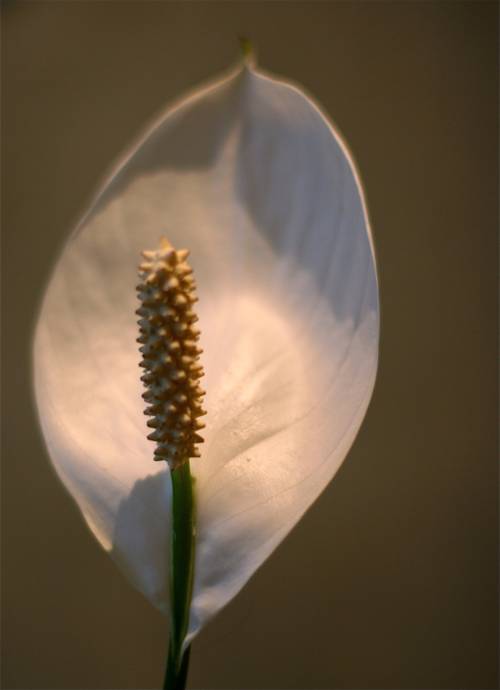
FAQ About Indoor Plant Wellness Monitoring

What is indoor plant wellness monitoring?
Indoor plant wellness monitoring refers to the process of observing and ensuring the health and vitality of plants grown within an indoor environment. It involves tracking various factors like soil moisture, light availability, temperature, and humidity to ensure optimal growth conditions for the plants.

Why is it important to monitor indoor plant wellness?
Monitoring indoor plant wellness is crucial for maintaining healthy plant growth and preventing issues such as overwatering, underwatering, inadequate light, and pest infestations. Healthy plants can improve indoor air quality, enhance aesthetics, and contribute to a positive atmosphere.

Which traditional methods are used for monitoring indoor plant wellness?
Traditional methods for monitoring indoor plant wellness include visual inspection of leaves for signs of distress (such as yellowing or browning), checking soil moisture with fingers, and observing growth patterns. It also involves regular watering and adjusting as per the seasonal requirements.

What technologies are available for indoor plant wellness monitoring?
Various technologies are available for indoor plant wellness monitoring, such as smart sensors that measure soil moisture, temperature, light levels, and humidity. Some advanced tools can even connect to your smartphone via apps to provide real-time data and alerts about plant health.

How do smart plant sensors work?
Smart plant sensors operate by detecting environmental conditions around the plant, such as moisture, temperature, and light levels. These sensors collect data and transmit it to an app or device, enabling plant owners to receive updates and suggestions on maintaining optimal conditions for their plants.

Can indoor plant monitoring help reduce plant stress?
Yes, monitoring can significantly reduce plant stress by ensuring that the environmental conditions remain within the optimal range. Regular monitoring helps in early detection of issues such as excessive dryness or overwatering, allowing timely interventions that promote plant health.

What are the benefits of using technology over traditional methods for plant monitoring?
Technological solutions offer several advantages over traditional methods, including continuous monitoring, data analysis, and notifications, which provide timely updates on plant health. They minimize human error and ensure that plants are always in optimal conditions by providing precise measurements and recommendations.

How can inadequate light levels affect indoor plants?
Inadequate light levels can hinder the process of photosynthesis in plants, leading to poor growth, pale leaves, and even plant death in severe cases. Continuous monitoring helps in adjusting the light conditions, ensuring the plants have sufficient light to thrive.

What role does humidity play in indoor plant wellness?
Humidity is vital for indoor plant wellness as it affects the plant's ability to absorb water through leaves. High humidity can promote mold and disease, while low humidity might cause the plant to dry out. Monitoring humidity ensures these levels are kept appropriate for each plant species.

How often should indoor plants be watered?
There is no one-size-fits-all answer, as different plants have varying water requirements. Factors like plant type, light exposure, room temperature, and humidity play significant roles. Monitoring tools can help determine when to water by checking the soil moisture content and preventing overwatering.

Are there apps available for indoor plant wellness monitoring?
Yes, numerous apps are specifically designed to assist with indoor plant wellness monitoring. These apps often connect with smart sensors to offer real-time updates, care tips, and alerts regarding the plants’ conditions, helping plant owners manage their plants efficiently.

Can wellness monitoring prevent pest infestations in indoor plants?
While not a direct method of pest control, monitoring indoor plant wellness can help prevent infestations by keeping plants healthy and less susceptible to pests. Early detection of unhealthy conditions such as overwatering, which can attract pests, reduces the likelihood of infestations.

What are the signs of overwatering in indoor plants?
Signs of overwatering include yellowed leaves, wilting despite moist soil, root rot, and moldy soil surface. Monitoring the soil moisture levels with devices can prevent overwatering by providing accurate insights about when to water the plants.

Do all indoor plants require the same care routine?
No, different indoor plants have specific needs depending on their species. Factors like light requirements, temperature, humidity tolerance, and watering frequency vary. Monitoring helps tailor these conditions to each plant’s needs, facilitating healthier growth.

Can indoor plant wellness impact indoor air quality?
Yes, healthy indoor plants can significantly improve air quality by absorbing carbon dioxide and releasing oxygen. They can also filter toxins from the air. Monitoring helps maintain plant health, ensuring they perform these beneficial roles effectively.

What is the impact of temperature on indoor plants?
Temperature affects the metabolic rate of plants and influences processes like photosynthesis and respiration. Extremes in temperature can cause stress, leading to leaf drop and poor growth. Monitoring devices can help maintain optimal temperature levels for indoor plants.

Is it expensive to invest in technology for indoor plant monitoring?
The cost of technology for indoor plant monitoring varies widely, from affordable apps and basic sensors to more sophisticated systems with comprehensive features. Investing in these can save time and potentially reduce plant losses, thereby offering long-term benefits.

How do I choose the right indoor plant sensors?
Choosing the right sensors depends on factors such as the type of plants, specific environmental conditions you need to monitor, and budget. Look for compatibility with your devices, ease of use, and the range of parameters they measure when selecting suitable sensors.

Can indoor plant monitoring be automated?
Yes, many systems offer automation such as automatic watering systems that work in conjunction with sensors to adjust watering schedules based on real-time data. This reduces manual effort and ensures the plants receive consistent care.

What are the challenges of indoor plant wellness monitoring?
Challenges include understanding the precise needs of each plant species, potential technical issues with monitoring devices, and ensuring sensors provide accurate data. Despite these, modern tools and resources can effectively address and mitigate these challenges.
